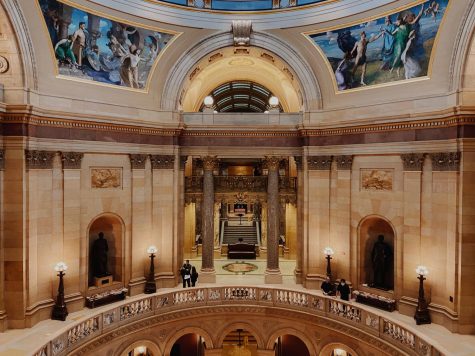Marijuana should be federally legalized
November 8, 2018
Marijuana legalization has been hotly debated throughout the United States for decades, ever since the drug first became widely used in the 1910s. Since then, marijuana has had a negative societal connotation and has remained illegal for a number of reasons. However, when the societal biases against the drug are overlooked, a fact soon becomes clear: the illegal status of the drug is a bizarre fallacy in the laws of the United States, existing largely because of discriminatory Nixon-era policies and remaining illegal despite the toll its legalization takes on society and medicine.
Marijuana is an outlier in the system when it comes to controlled substances. It is currently classified as a schedule one drug, which, as explained by the United States Drug Enforcement Administration (DEA), is a drug with “no currently accepted medical use and a high potential for abuse.” The strangeness of cannabis’ position on this list is revealed when marijuana is compared with both other controlled substances. Other schedule one drugs include heroin and LSD, substances that are both extremely dangerous and potent, and certainly do not have any legitimate pharmaceutical value.
Marijuana, has, according to the DEA, zero confirmed deaths attributed to it, and has significant medical potential. It simply doesn’t belong on the list. Alcohol, by comparison, has killed over 88,000 people, according to the Center for Disease Control. Even caffeine, a drug that is completely normalized in modern society, killed a 16-year-old boy due to an overdose in May of 2017, according to NBC news. Why, then, is marijuana as controlled as it is?
Marijuana was first made illegal in the late 1930s, having been associated, according to drugpolicy.org, with prejudice surrounding Mexican immigrants and popular beliefs that the drug drove African-American men into a violent rage. The law was later ruled unconstitutional in the 1969 court case Leary V. United States, but the subject of illegalization came up again under the Nixon administration. Nixon declared drugs “public enemy number one,” and imposed the Controlled Substances Act, which declared marijuana a schedule one drug. However, the motivations behind this were less than heroic; the legislation was driven mainly by desires to associate marijuana with and subsequently imprison minority groups.
John Ehrlichman, a member of Nixon’s cabinet, explained in a 1994 interview with Harper’s Magazine that “We couldn’t make it illegal to be either against the war or black, but by getting the public to associate the hippies with marijuana and blacks with heroin and then criminalizing both heavily, we could disrupt those communities… Did we know we were lying about the drugs? Of course we did.” This type of discriminatory policy only continued during the Reagan administration, where mandatory minimum sentencing laws allowing the government to imprison marijuana users for obscene lengths of time. According to the American Addiction Center, even though substance use rates for white and black US citizens are very similar, African Americans are arrested for drug abuse at a rate 13 times higher than their white counterparts.
A common argument against legalization is that it is a ‘gateway’ drug to harder substances. However while this would make sense in theory, it simply isn’t true. A 2009 peer-reviewed research paper by Archie Brodsky, the head of the department of psychiatry at the Harvard Medical School, quantifies this, explaining that “Although most heavier drug users were once lighter drug users, this association does not establish a connection. Few young people progress from lighter to heavier drug use.” There simply isn’t a connection. Just because someone drinks alcohol, for example, doesn’t mean they are going to continue on to use more dangerous substances. The only reasonable explanation for the ‘gateway’ concept is that drug dealers who sell cannabis will sometimes ‘spike’ the marijuana with harder drugs in order to get their buyers hooked and moving up to more extreme substances. However, were marijuana to be legalized, the necessity for people to buy from black market dealers is negated, and this concern disappears.
Finally, there is significant evidence that marijuana has significant medical benefits. In an article posted to the website this January, the Harvard Medical Center lists just some of the benefits of the substance, saying that “Marijuana appears to ease the pain of multiple sclerosis, and nerve pain in general… Medical marijuana is also reported to help patients suffering from pain and wasting syndrome associated with HIV, as well as Irritable Bowel Syndrome and Crohn’s disease.” Again, a schedule one drug is defined as having ‘no accepted medical use,’ a statement in direct contrast to marijuana’s wide variety of uses as a painkiller. Cannabis is uniquely important as the abilities of the substance are an area “where few other options exist, and those that do, such as Neurontin, Lyrica, or opiates are highly sedating,” the Harvard Medical Center continues. Legalizing the drug would allow the boundaries of its medical uses to be fully acted upon.
Because of the inconsistencies in enforcement of other illicit drugs, the history of racist intentions surrounding its legalization, and the great potential for important medical use, marijuana is a clear candidate for federal legalization, and policy changes can’t come fast enough.







